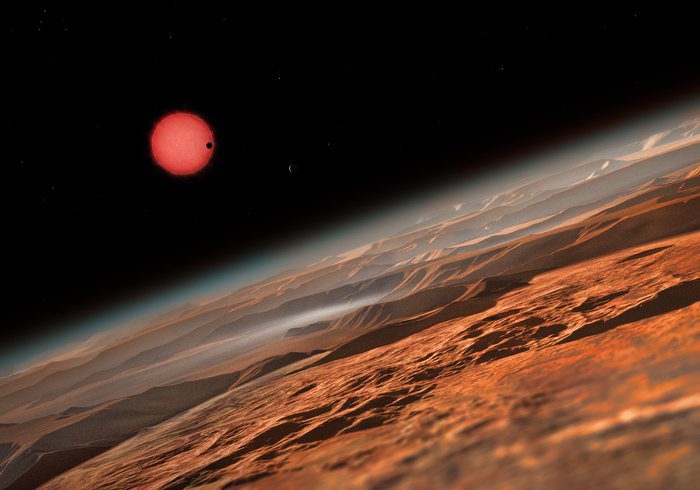
I enjoyed an article in the current issue of Scientific American about “circumstellar disks.” It’s by a professor at the University of Colorado at Boulder who is reporting on work carried out at the Atacama Large Millimeter/submillimeter Array (ALMA) telescope high up in the Atacama Desert of Chile: Meredith A. MacGregor, “Astronomers Watch as Planets Are Born: High-resolution images of the debris disks around stars are revealing how solar systems form,” Scientific American (June 2020): 54-61. (The title and subtitle are somewhat different in the print edition, which seems needlessly confusing.) Here are some passages that struck me:
Professor MacGregor first explains that stars are formed from molecular clouds, which are composed of dust and gas. Whereas “empty” space typically has a density of about one atom per cubic centimeter, molecular clouds “can reach densities 10,000 to one million times this norm” (56). And, when they do so, their gravity causes them to collapse and, eventually, to turn into stars. As they rotate, though, remaining dust and gas collects around them to form what are called “circumstellar disks.” They might also be called “protoplanetary disks,” because planets form from them:
Rock, metal and ice condense out of the disk to form planetary seeds. As seeds start to collide and stick together, they grow larger and larger until they have enough gravity to start attracting more material through a process known as accretion. The baby protoplanets orbit within the disk and continue accumulating material, carving out gaps in the disk in a game of planetary Pac-Man. Nearly all stars that are younger than a few million years are surrounded by disks that most likely harbor a zoo of new planetary systems. (57)
How common are such phenomena? How common are planets?
By using infrared telescopes to search for such bright spots, astronomers have confirmed that at least 20 to 25 percent of stars are surrounded by debris disks. Given our picture of how planetary systems form, one might logically conclude that all stars should be surrounded by remnant material—after all, statistics from the Kepler mission tell us that every star in the galaxy has at least one orbiting exoplanet. In fact, debris disks are probably more common than we know. (57)
Telescope missions such as Kepler and TESS (the Transiting Exoplanet Survey Satellite) and many ground-based surveys have so far detected thousands of exoplanets. Yet most of these planets are more massive or are closer to their host star than the planets in our solar system are. These types of planets are not necessarily more common, though; they are simply easier for us to find. (59)
In other words, there may be an inconceivably large number of exoplanets out there. And how early do protoplanetary disks form?
In one of its first blockbuster disk images, taken in 2014, ALMA imaged HL Tau, a young system probably less than 100,000 years old. The photograph revealed that what had been assumed to be a continuous disk was carved into multiple rings and gaps. Given the young age of the system, if these gaps are actually sculpted by baby planets, planet formation must start earlier than originally thought. In another notable discovery, in 2018, the DSHARP (Disk Substructures at High Angular Resolution Project) survey looked at 20 protoplanetary disks with high resolution and found that every one of them had rings and gaps, and some even showed spiral structure. Apparently such features are not unique to HL Tau but are instead ubiquitous to young circumstellar disks. (59)
And worlds without number have I created; and I also created them for mine own purpose; and by the Son I created them, which is mine Only Begotten. (Moses 1:33)












